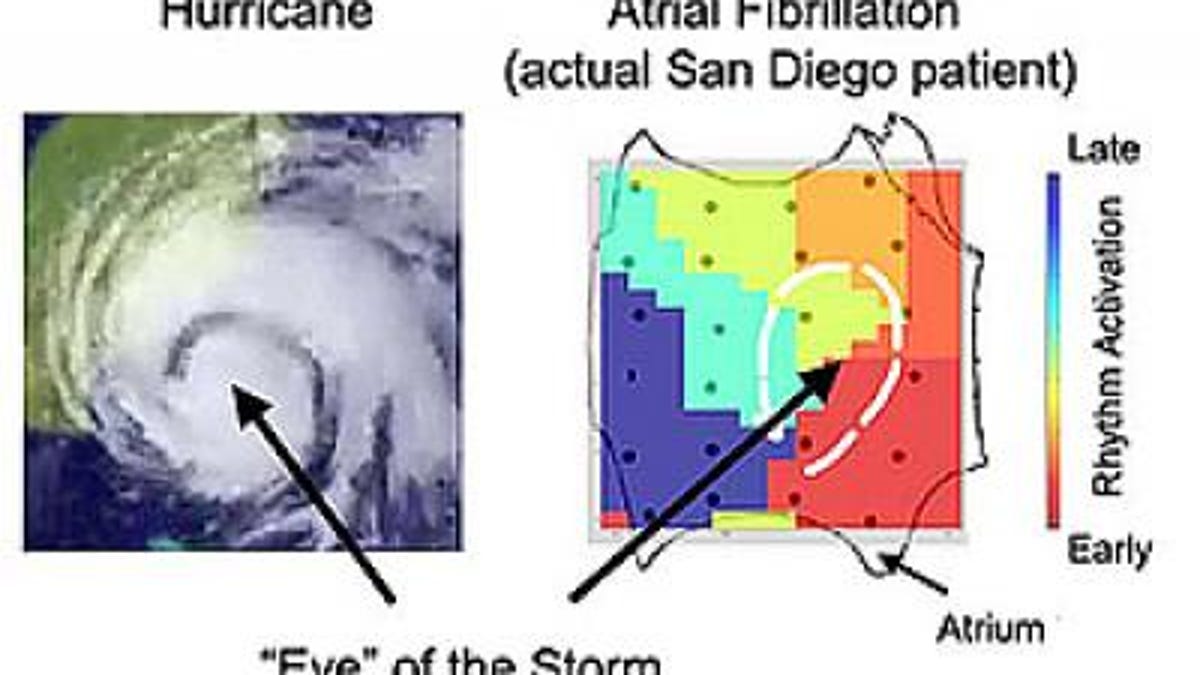New tech could target and treat irregular heartbeats
The tech behind a new study may help cardiologists double their success in treating heart arrhythmias by pinpointing the tiny electrical disturbances that cause them.

Researchers are reporting that they have found, for the first time, that tiny electrical spinning tops ("rotors") within the heart cause atrial fibrillation (AF), a type of arrhythmia in which the heartbeat is faster and irregular.
What's more, they found that by targeting the so-called eye of the storm, they could actually slow or even terminate the AF, the multidisciplinary team from UC San Diego, UCLA, and Indiana University reports in the July issue of the Journal of the American College of Cardiology.
Today, catheter ablation is a common therapy used to treat AF, but because the sources of these arrhythmias have been so elusive, its success has been limited.
Now that the researchers have been able to map out these so-called hurricanes within the heart using their new technique, which they call Focal Impulse and Rotor Modulation (FIRM), they are reporting a near doubling in treatment success.
But perhaps the most remarkable aspect of the procedure, the researchers report, is that their new approach shut down or significantly slowed AF in an average of just 2.5 minutes. This compares with the more conventional several hours of treatment over larger regions of the heart with about half the success rate.
"We are very excited by this trial, which for the first time shows that atrial fibrillation is maintained by small electrical hotspots, where brief FIRM-guided ablation can shut down the arrhythmia and bring the heart back to a normal rhythm after only minutes of ablation," said lead author Sanjiv Narayanof of the UC San Diego Sulpizio Cardiovascular Center in a news release.
With only 92 subjects, the study is small and the results preliminary, but if these results hold across a larger group of patients with AF, better treatment is surely on the horizon.

